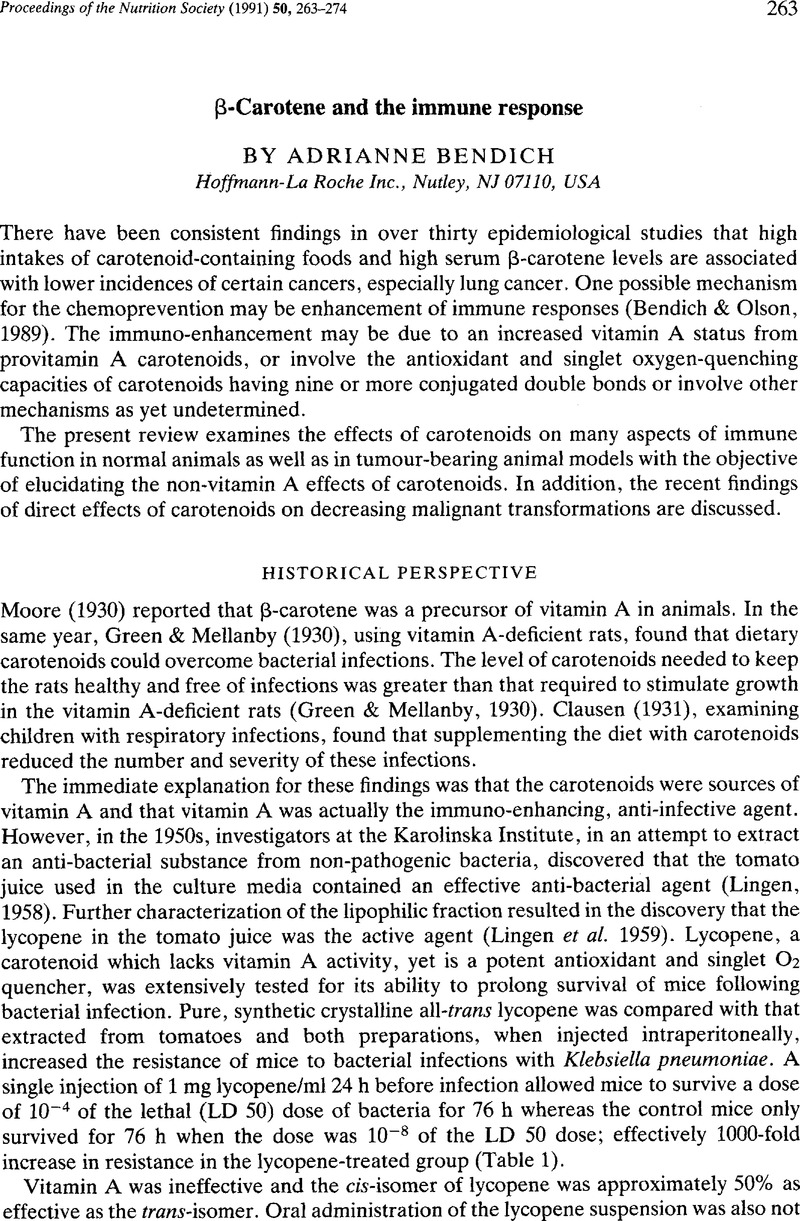Crossref Citations
This article has been cited by the following publications. This list is generated based on data provided by Crossref.
MACHLIN, LAWRENCE J.
1992.
Introduction.
Annals of the New York Academy of Sciences,
Vol. 669,
Issue. 1,
p.
1.
Kardinaal, A.F.M.
van't Veer, P.
Kok, Fj
Ringstad, J.
Gómez-Aracena, J.
Mazaev, V.P.
Kohlmeier, L.
Martin, B.C.
Aro, A.
Huttunen, J.K.
Kark, J.D.
Delgado-Rodriguez, M.
Riemersma, R.A.
Martin-Moreno, J.M.
Kok, F.J.
Huttunen, J.K.
Kohlmeier, L.
Martin-Moreno, J.M.
and
van 't Veer, P.
1993.
Antioxidants in adipose tissue and risk of myocardial infarction: the EURAMIC study.
The Lancet,
Vol. 342,
Issue. 8884,
p.
1379.
BENDICH, ADRIANNE
1993.
Biological Functions of Dietary Carotenoids.
Annals of the New York Academy of Sciences,
Vol. 691,
Issue. 1,
p.
61.
Juin, C.
Acamovic, T.
Younie, D.
and
Yackiminie, D.
1993.
Comparison of fat quality from organically and conventionally husbanded steers.
BSAP Occasional Publication,
Vol. 17,
Issue. ,
p.
83.
Homnick, Douglas N.
Cox, Janice H.
DeLoof, Michael J.
and
Ringer, Thomas V.
1993.
Carotenoid levels in normal children and in children with cystic fibrosis.
The Journal of Pediatrics,
Vol. 122,
Issue. 5,
p.
703.
Krinsky, Norman I.
1994.
Natural Antioxidants in Human Health and Disease.
p.
239.
Goedhart, Annemiek C.
and
Bindels, Jacques G.
1994.
The Composition of Human Milk as a Model for the Design of Infant Formulas: Recent Findings and Possible Applications.
Nutrition Research Reviews,
Vol. 7,
Issue. 1,
p.
1.
Lessard, M.
and
Dupuis, M.
1994.
Differential modulation of chicken lymphocyte blastogenesis and cytotoxic activity of natural killer cells in vitro by retinol, retinoic acid and beta-carotene.
Nutrition Research,
Vol. 14,
Issue. 8,
p.
1201.
Thurnham, David I.
1994.
Carotenoids: functions and fallacies.
Proceedings of the Nutrition Society,
Vol. 53,
Issue. 1,
p.
77.
Daudu, PA
Kelley, DS
Taylor, PC
Burri, BJ
and
Wu, MM
1994.
Effect of a lowβ-carotene diet on the immune functions of adult women.
The American Journal of Clinical Nutrition,
Vol. 60,
Issue. 6,
p.
969.
Girard, P.
Falconnier, B.
Bricout, J.
and
Vladescu, B.
1994.
β-Carotene producing mutants of Phaffia rhodozyma.
Applied Microbiology and Biotechnology,
Vol. 41,
Issue. 2,
p.
183.
Jyonouchi, Harumi
Sun, Sining
Tomita, Yoshifumi
and
Gross, Myron D.
1995.
Astaxanthin, a Carotenoid without Vitamin A Activity, Augments Antibody Responses in Cultures Including T-helper Cell Clones and Suboptimal Doses of Antigen.
The Journal of Nutrition,
Vol. 125,
Issue. 10,
p.
2483.
COODLEY, GREGG O.
COODLEY, MARCIA K.
and
NELSON, HEIDI D.
1995.
Micronutrients in HIV-Infected Women.
Journal of Women's Health,
Vol. 4,
Issue. 3,
p.
303.
Jyonouchi, Harumi
Sun, Sining
and
Gross, Myron
1995.
Effect of carotenoids on in vitro immunoglobulin production by human peripheral blood mononuclear cells: Astaxanthin, a carotenoid without vitamin a activity, enhances in vitro immunoglobulin production in response to a t‐dependent stimulant and antigen.
Nutrition and Cancer,
Vol. 23,
Issue. 2,
p.
171.
Combs, Gerald F.
1996.
Should Intakes with Beneficial Actions, Often Requiring Supplementation, Be Considered for RDAs?.
The Journal of Nutrition,
Vol. 126,
Issue. ,
p.
2373S.
Borel, P
Grolier, P
Armand, M
Partier, A
Lafont, H
Lairon, D
and
Azais-Braesco, V
1996.
Carotenoids in biological emulsions: solubility, surface-to-core distribution, and release from lipid droplets.
Journal of Lipid Research,
Vol. 37,
Issue. 2,
p.
250.
Kramer, TR
and
Burri, BJ
1997.
Modulated mitogenic proliferative responsiveness of lymphocytes in whole-blood cultures after a low-carotene diet and mixed-carotenoid supplementation in women.
The American Journal of Clinical Nutrition,
Vol. 65,
Issue. 3,
p.
871.
Winklhofer-Roob, Brigitte M
Hof, Martin A van’t
and
Shmerling, David H
1997.
Reference values for plasma concentrations of vitamin E and A and carotenoids in a Swiss population from infancy to adulthood, adjusted for seasonal influences.
Clinical Chemistry,
Vol. 43,
Issue. 1,
p.
146.
Basu, Tapan
and
Talmor, Nili
1997.
Food Factors for Cancer Prevention.
p.
523.
Surai, Peter F
and
Speake, Brian K
1998.
Distribution of carotenoids from the yolk to the tissues of the chick embryo11This research was funded by the Scottish Office Agriculture Environment and Fisheries Department..
The Journal of Nutritional Biochemistry,
Vol. 9,
Issue. 11,
p.
645.



